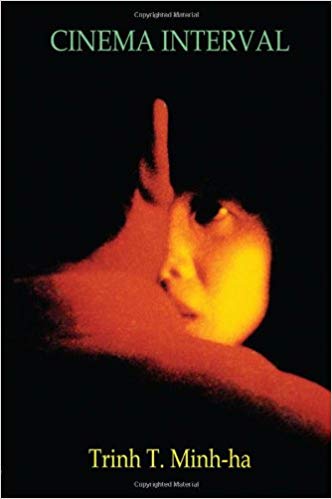A collection of texts which can expand upon the conversation of the essay film.
The ESSAY FILM AFTER FACE AND FICTION
Nora M. Alter reveals the essay film to be a hybrid genre that fuses the categories of feature, art, and documentary film. Like its literary predecessor, the essay film draws on a variety of forms and approaches; in the process, it fundamentally alters the shape of cinema. The Essay Film After Fact and Fiction locates the genre’s origins in early silent cinema and follows its transformation with the advent of sound, its legitimation in the postwar period, and its multifaceted development at the turn of the millennium. In addition to exploring the broader history of the essay film, Alter addresses the innovative ways contemporary artists such as Martha Rosler, Isaac Julien, Harun Farocki, John Akomfrah, and Hito Steyerl have taken up the essay film in their work.
Cinema Interval
"An image is powerful not necessarily because of anything specific it offers the viewer, but because of everything it apparently also takes away from the viewer."
--Trinh T. Minh-ha
Vietnamese filmmaker and feminist thinker Trinh T. Minh-ha is one of the most powerful and articulate voices in independent filmmaking. In her writings and interviews, as well as in her filmscripts, Trinh explores what she describes as the "infinite relation" of word to image. Cinema-Interval brings together her recent conversations on film and art, life and theory, with Homi Bhabha, Deb Verhoeven, Annamaria Morelli and other critics. Together these interviews offer the richest presentation of this extraordinary artist's ideas. Extensively illustrated in color and black and white, Cinema-Interval covers a wide range of issues, many of them concerning "the space between"--between viewer and film, image and text, interviewer and interviewee, lover and beloved. As an added bonus, the complete scripts of Trinh's films Surname Viet Given Name Nam and A Tale of Love are also included in the volume.
The abc of the Essay Film
“In Autumn and Winter 2013/2014, Christa Blümlinger and Harun Farocki worked on the dialogical “ABCs of the Essay Film,” which is published here for the first time in its original German version. In 26 short paragraphs, reacting to key terms suggested by Christa Blümlinger (from “A for Adorno” to “Z for Zidane”), Farocki explores his proximity, but also his distance to filmmakers like Chris Marker, Jean-Luc Godard, Artavazd Peleshian, or Alexander Kluge and speaks about specific operations in his films, TV programs, and installations.
The text is complemented by a short text by Farocki which was published in 1987 to accompany a film program at the Berlin Akademie der Künste, where the essay film is described as a film “that is useful without being subservient and without standing to attention.”


